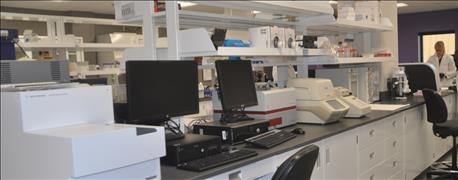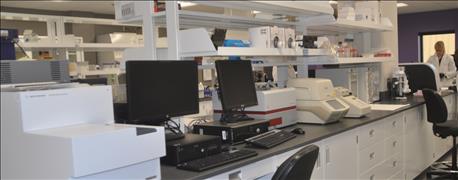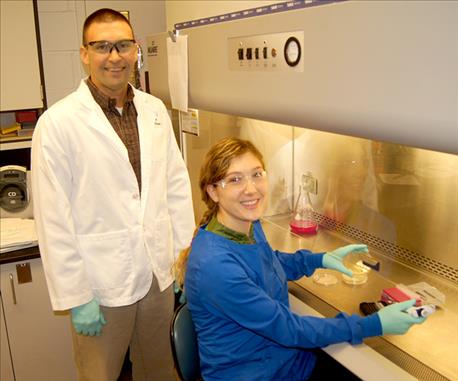November 8, 2016

Researchers at Kansas State University have identified a new swine circovirus.
Its discovery is auspicious, as a related swine circovirus, porcine circovirus type 2, also known as PCV2, has had a devastating history in swine production. Associated diseases caused millions of dollars in losses globally in the 1900s and early 2000s.
The new circovirus is different from other known circoviruses. It was discovered by Benjamin Hause and Rachel Palinski, who is with the Kansas State Veterinary Diagnostic Laboratory, along with collaborators at Kansas State University, Iowa State University and Smithfield Hog Production.

SWINE RESEARCH: Researchers at Kansas State University have identified a new swine circovirus.
"The Kansas State Veterinary Diagnostic Laboratory was sent samples from sows with signs of clinical disease typically caused by PCV2 infection; however, the samples were negative for PCV2," says Hause, an adjunct professor at Kansas State University's College of Veterinary Medicine. "Through further investigation, we identified an extremely novel, divergent new species of circovirus. We also performed polymerase chain reaction testing, or PCR, on random samples submitted to the lab to see how widespread this virus is in the U.S. swine herd. Twelve percent were positive for this new virus. We are hoping this is not the beginning of what could be a whole new epidemic of circovirus infections."
Palinski is a doctoral student in pathobiology at the College of Veterinary Medicine.

VIRUS IDENTIFIED: Benjamin Hause works with Rachel Palinski, who is with the Kansas State Veterinary Diagnostic Laboratory, to identify a unique virus suspected of causing recent cases of disease in swine. The new virus is a distant relative of the devastating PCV2.
The results of the discovery were published in an article, "A novel porcine circovirus distantly related to known circoviruses is associated with porcine dermatitis and nephropathy syndrome and reproductive failure," which appeared in the November issue of the Journal of Virology, produced by the American Society for Microbiology.
Porcine circovirus type 2 was first identified in Canada in the mid-1990s during sporadic outbreaks of postweaning multisystemic wasting syndrome, or PWMS, where young pigs fail to thrive and progressively lose body condition.
“PCV2 caused sporadic disease at first, but then there were massive epidemics of PMWS in Asia and Europe, and in North America in the early 2000s," Hause says. "When I started working in the industry in 2005, this was about the height of this disease, and it literally killed millions and millions of pigs."
Hause says that vaccination for porcine circovirus type 2 has successfully controlled the disease, but that it remains as one of the most significant viruses of swine.
"Now we have a novel porcine circovirus that is distantly related to known circoviruses and that has been identified in sows with porcine dermatitis and nephropathy syndrome, or PDNS, and reproductive failure," Hause says. "Porcine circovirus 2, which has previously been associated with these clinical presentations, was not identified here. This virus is clearly not a variant of PCV2, but a novel virus in its own right."
Hause says after they discovered the new virus, they were able to check for its presence in archived samples.
"We detected porcine circovirus type 3 in aborted fetuses and in archival diagnostic cases of PDNS lesions that previously tested negative for PCV2," Hause says. "Given the high economic impact of PCV2, this novel circovirus warrants further studies to elucidate its significance and role in porcine circovirus associated disease."
Montgomery writes for Kansas State University News Service.
You May Also Like




